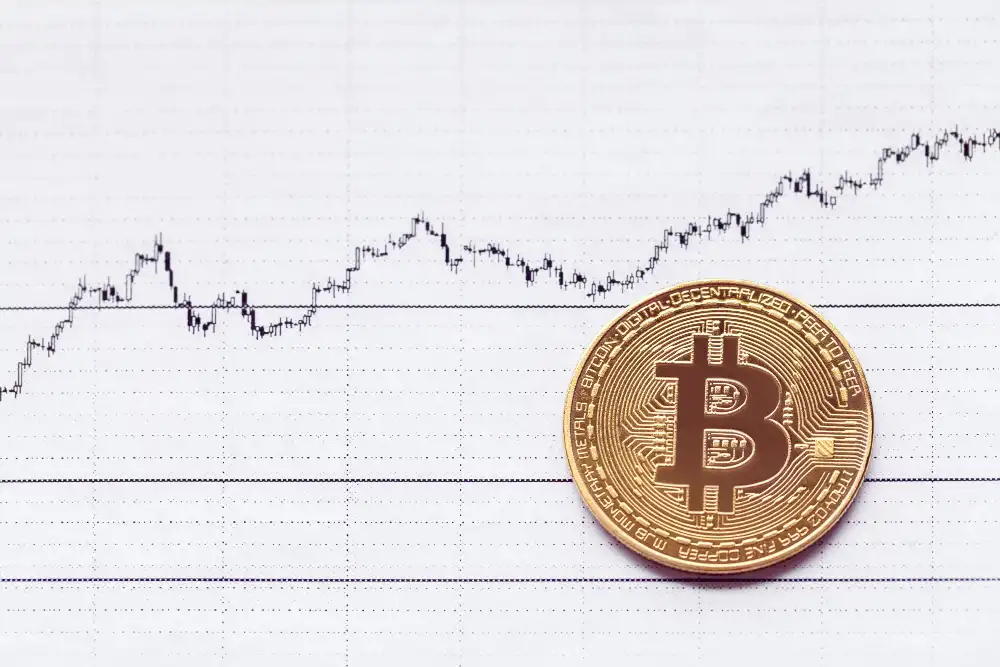Decoding the BTC Rainbow Chart: How the Bitcoin Rainbow Chart Predicts Crypto Price Trends

Imagine having a Bitcoin price forecast tool that turns complex data into a simple spectrum of colors. That’s exactly what the Bitcoin Rainbow Chart offers – a vibrant, visual way to gauge where Bitcoin’s price stands in its long-term cycle. This colorful chart maps BTC’s historical price on a logarithmic scale and overlays it with rainbow color bands, each hinting at whether the market is undervalued or overvalued. It started as a community joke, yet it’s become surprisingly insightful for long-term crypto investors. (It’s so popular that phrases like the “bitcoin rainbow chart Blum code” have been buzzing around online communities – a testament to the chart’s meme status.) But novelty aside, why does this chart matter? Behind those rainbow hues lies a data-driven story of Bitcoin’s past cycles and a peek into potential future crypto price trends.
In this article, we’ll decode how the rainbow chart Bitcoin enthusiasts use works, explore its track record, and discuss how traders leverage it. We’ll also compare it to other prediction models and highlight its limitations – all through a factual, storytelling lens. Whether you’re a seasoned Bitcoiner or just curious about the hype, you’ll understand what the BTC Rainbow Chart is (and isn’t) and how it can inform your crypto strategy. Let’s dive in.
How the BTC Rainbow Chart Works

At its core, the Bitcoin Rainbow Chart is a long-term logarithmic price chart of Bitcoin overlaid with a spectrum of color bands. Each color band corresponds to a price range relative to historical trends. More fabulous colors like blues and greens represent lower price bands (historically “cheap” or undervalued). In comparison, warmer colors like orange and red represent higher price bands (historically “expensive” or overheated levels). In essence, the rainbow bands act as a sentiment gauge:
- Blue bands (bottom) – Indicate extreme undervaluation. Bitcoin in the blue zone has historically been in a bear-market bottom or “fire sale” territory (a strong buy signal for long-term investors).
- Green to Yellow bands (middle) – Indicate a fair value range. In these zones, BTC is neither extraordinarily cheap nor in a bubble. For example, yellow is often considered a “HODL” (hold on for dear life) zone – not a clear buy or sell.
- Orange to Red bands (top) – Indicate overvaluation or bubble risk. When price enters red bands, it suggests FOMO (fear of missing out) is peaking, and the market is overbought – historically a good time to exercise caution or take profit. These bands aren’t magic predictions but are based on a logarithmic regression fitted to Bitcoin’s historical price data. As Bitcoin’s price grows, the bands slope upward (flattening gradually on the log chart). When the price moves up or down, its position within the colored bands gives a quick sense of relative value. Is BTC “in the blue” (perhaps oversold) or “in the red” (possibly a bubble)? The rainbow chart gives an instant visual cue.
It’s important to note that the exact color labels and thresholds are somewhat subjective – they were initially chosen tongue-in-cheek by the chart’s creators. For instance, early versions of the chart had humorous labels like “Basically a Fire Sale” for the lowest band and “Maximum Bubble Territory” for the highest. The current iteration still carries that spirit, but the underlying idea is straightforward: historical context. By seeing today’s price against a multi-year rainbow backdrop, you can contextualize whether we’re closer to historic lows or highs.
Historical Performance Analysis

The BTC Rainbow Chart has gained a following because of its surprisingly resonant track record with Bitcoin’s primary market cycles. Let’s take a trip down memory lane:
- 2014–2015 (Post-2013 Crash): After Bitcoin’s first big bubble to ~$1,150 in late 2013, prices crashed into the blue bands of the rainbow chart by early 2015. In hindsight, this deep “blue” period marked a generational buying opportunity; it was the bear-market bottom around ~$200–$300. Early adopters noted how the chart had turned deep blue, signalling extreme undervaluation – just as fear and despair peaked in the market. Indeed, those who bought in the blue zone were rewarded when the next uptrend began.
- 2017 Bull Run: Fast-forward to December 2017 – Bitcoin rocketed to nearly $20,000 in its first mainstream mania. The rainbow chart at that point showed BTC in the red band, indicating a highly overvalued market. The price brushed against the bands’ top end, suggesting a bubble. Sure enough, a brutal correction followed in early 2018. The chart effectively flagged that 2017’s price levels were unprecedented relative to past trends. Traders using the chart might have been cautious when they saw Bitcoin entering the “red zone” then.
- 2018–2019 (Bear to Recovery): By late 2018, Bitcoin had fallen over 80% after the blow-off top to around $3,000. Once again, the rainbow chart dipped into the cool colors (green and blue hues) – implying the asset was heavily oversold relative to its trend. Morale was low in the market, but the chart’s lower-band readings hinted at opportunity. Indeed, BTC gradually recovered in 2019, rising into the middle yellow/green bands. It wasn’t a whole bull market yet, but the worst of the undervaluation had passed.
- 2021 Rally and Beyond: The next significant spike came in 2020–2021. After the 2020 halving and pandemic-induced volatility, Bitcoin climbed rapidly. By April 2021, it hit ~$64,900; in November 2021, it reached a new all-time high of around $69,000. The rainbow chart showed Bitcoin entering the upper orange/red bands during these peaks – a sign that the market was overheating. Shortly after, Bitcoin experienced another sharp correction. By mid-2022, BTC had dropped below $20,000in the aftermath of that cycle. Notably – and for the first time – the price fell below the chart’s lowest blue band during the 2022 crypto crash. This implied that the original rainbow model, which had held up for years, was now out of calibration with the new data.
Rainbow Chart and Bitcoin’s Halving Cycle
Even if you’re new to crypto, one term you’ll quickly encounter is Bitcoin halving. This event occurs roughly every four years, cutting the supply of new Bitcoin in half – a built-in rhythm that has historically ignited strong price uptrends. The Bitcoin Rainbow Chart reflects these big cycles vividly. For instance, after the 2020 halving, Bitcoin’s price rocketed from the chart’s more incredible blues (undervalued zone) into the warmer reds (overvalued peak) by late 2021. It’s no coincidence that reduced supply and renewed investor excitement pushed BTC through those vibrant bands.
Long-term investors plan with this four-year cycle in mind. Many recall how each halving eventually saw Bitcoin climbing to new highs, validating the Rainbow Chart as a long-term sentiment gauge. Experienced traders often use the chart alongside halving timelines to fine-tune their strategy – accumulating when the chart hints at extreme undervaluation ahead of a halving, then considering profit-taking as the colors flash hot. And for beginners, understanding this cycle provides a reassuring big-picture perspective: it shows that today’s lows and highs fit into a broader pattern, helping them resist panic and FOMO.
Most importantly, these Rainbow Chart insights should lead to informed action. Savvy investors ensure they buy efficiently if the chart suggests it’s a prime accumulation period. One way is by choosing platforms with low fees – our Binance vs Coinbase fees comparison guide helps you decide where you’ll get more crypto for your money. By aligning your strategy with the Rainbow Chart’s signals and smart platform choices, you stay prepared for the next big swing in Bitcoin’s cycle.
Bitcoin Rainbow Chart Price Forecast

So, what insights can the rainbow chart offer about Bitcoin’s future? While it’s not a crystal ball, it does provide a rough framework for price forecasting based on long-term trends. It outlines a potential range – from an upper bound (if bullish momentum repeats historical extremes) to a lower bound (if a harsh bear scenario unfolds) – rather than a single-point prediction.
Looking ahead, the rainbow chart’s trajectory suggests that Bitcoin’s valuation could continue to grow but at a decelerating pace (the bands gradually flatten on a log scale). For instance, according to the current Rainbow Chart bands, Bitcoin’s upper red band will be in the six-figure territory a few years from now. In plain English, if BTC were to repeat a blow-off top similar to 2017 or 2021 in the next cycle, the chart implies it “could” reach hundreds of thousands of dollars. On the other hand, the lower blue band over the next few years remains in the low five-figure range, meaning a severe bear market could see Bitcoin back to prices around the tens of thousands. That’s a wide range, but it’s the reality of an asset as volatile as Bitcoin – and the rainbow chart quantifies that uncertainty.
To make it concrete, imagine it’s late 2025. The rainbow model (as of now) might project a mid-band “fair value” for BTC around, say, ~$50,000. If market hype far exceeds that (pushing the price to 3-4× the trend), the upper red band could be >$200,000. Conversely, a drop to the blue band in a pessimistic scenario might put BTC under $20,000 again. Those numbers are illustrative, not guarantees, but they show the ballpark that the rainbow chart covers. It’s saying: “Based on the last 13+ years of data, here’s where Bitcoin’s value tends to oscillate.”
Notably, the chart also ties into Bitcoin’s halving cycle, a fundamental driver of these booms and busts. Historically, Bitcoin has been near the lower bands around halving events and climbed toward the upper bands in the ensuing years. For example, around the 2020 halving, BTC was in a greenish band (undervalued), and by late 2021 (about 18 months post-halving), it had reached the red band (overvalued) before correcting. If this pattern holds, the upcoming halving could once again see BTC in lower bands initially, with a potential climb afterwards. (Indeed, bull markets have historically peaked roughly 518–546 days after each halving on average, though three data points are not a lot to establish a rule.)
However, caution is key. The “Bitcoin rainbow chart price forecast” is not a promise – it’s a projection based on past performance. As 2022 proved, real-world events can deviate from the model. Please think of the rainbow bands as guardrails of probability: they outline an envelope where price tends to stay. If Bitcoin shoots above the rainbow, it might be an unsustainable bubble (thus likely to fall back). If it crashes below, it might be an extreme undervaluation that eventually corrects upward. In most “normal” scenarios, the price will bob within the bands. So the forecast gives a range of possibilities – helpful in setting expectations (e.g. don’t count on $1,000,000 per BTC tomorrow, but don’t panic if it dips to $20k in a bear market; both are within the modelled trend boundaries).
In summary, the rainbow chart suggests that Bitcoin’s price should continue trending up over the long run but with diminishing returns and plenty of volatility. It paints a picture of growth within bounds: each cycle reaches new highs with lower returns than the previous cycle’s jump. Investors and analysts often use this to temper their forecasts – bullish but not unrealistic. Remember, though: “Past performance doesn’t guarantee future results”. The Rainbow Chart is a guide, not a prophecy.
Comparison with Other Crypto Price Prediction Models
How does the Bitcoin Rainbow Chart stack up against other models that attempt to forecast crypto prices? Below is a comparative look at the Rainbow Chart alongside two popular predictive frameworks: the Stock-to-Flow model and a simple Halving Cycle trend model. Each has its basis, strengths, and weaknesses:
| Model & Basis | Strengths | Weaknesses |
| Bitcoin Rainbow Chart (Logarithmic regression of past prices, divided into color-coded bands) | – Visual & intuitive: Simplifies complex data into an easy-to-read colored undervalued to overvalued zones chart. – Long-term insight: Highlights Bitcoin’s macro cycles, which have historically aligned with significant tops and bottoms, giving investors a big-picture roadmap. – Cultivates discipline: Encourages a contrarian approach (buy low, sell high) based on historical trends rather than hype or fear. | – Historically-driven: Entirely based on fitting past performance – it has no fundamental rationale beyond “it worked before.” – Needs updates: It has required adjustment as new data emerged (e.g., the model broke in 2021–2022 and was revised). Future shifts in market dynamics could invalidate it again. – No demand factors: It doesn’t factor in adoption rates, macroeconomics, or other external variables—only price. Unlike some fundamental models, this ignores why price is moving. |
| Stock-to-Flow (S2F) – (Model’s price based on Bitcoin’s supply issuance schedule – specifically the ratio of existing stock to new flow of BTC) | Supply-driven logic captures the impact of Bitcoin’s halving (supply cuts) on price. Historically, reduced supply correlated with higher prices, which S2F quantifies. – Bold predictions: Gained fame for forecasting very high prices, raising awareness of Bitcoin’s scarcity value. At its peak, S2F’s clear trajectory gave investors a concrete long-term target to consider. – Influential: Its popularity pressured institutions to take Bitcoin seriously; even some banks referenced S2F in research. | – Oversimplification: Assumes price is only a function of supply, ignoring demand completely. Fundamental markets depend on buyers, not just scarcity. – Missed the mark: The model famously predicted $100K+ BTC by late 2021, which never materialized, undermining its credibility. By late 2022, prices were far below S2F projections, breaking the model’s validity. – No self-correction: Unlike the rainbow chart, which can be recalibrated, S2F claimed a fixed “law.” When it failed, it offered little flexibility, revealing a fragile foundation. |
| Halving Cycle Trend – (Observes that Bitcoin tends to boom after each halving event, roughly every 4 years) | – Visual & intuitive: Simplifies complex data into an easy-to-read colored undervalued to overvalued zones chart. – Long-term insight: Highlights Bitcoin’s macrocycles, which have historically aligned with significant tops and bottoms, giving investors a big-picture roadmap. – Cultivates discipline: Encourages a contrarian approach (buy low, sell high) based on historical trends rather than hype or fear. | – Historically-driven: Entirely based on fitting past performance – it has no fundamental rationale beyond “it worked before.” – Needs updates: It has required adjustment as new data emerged (e.g., the model broke in 2021–2022 and was revised). Future shifts in market dynamics could invalidate it again. – No demand factors: It doesn’t factor in adoption rates, macroeconomics, or other external variables—only price. Unlike some fundamental models, this ignores why the price is moving. |
As the table shows, each model has its merits. The Rainbow Chart excels in simplicity but is a retrofitted guideline. Stock-to-Flow tried a bold quantitative approach but proved too rigid and one-dimensional (especially after it failed to predict the 2021 outcome). The Halving Cycle approach, on the other hand, embraces Bitcoin’s innate supply schedule and has been directionally accurate, yet it remains a rough heuristic with plenty of variability.
Where does that leave the Rainbow Chart? It often strikes a middle ground between pure data fitting and fundamental narrative. It’s grounded in Bitcoin’s past behavior (which partly reflects the halving influence and network growth), but it doesn’t claim to be scientifically exact – it’s adaptable when reality shifts. Its value is in visualizing Bitcoin’s journey and reminding us of the cyclical nature of markets. By comparing these models, one can glean a broader perspective: Bitcoin’s price is influenced by programmed scarcity (halving investor psychology (hype and fear cycles) and macro trends – no single model captures it all.
In practice, seasoned investors might consult multiple models. For example, they watch the halving countdown for general bullish bias, use the Rainbow Chart to judge how overheated or cold the market is relative to history, and remain skeptical of any model that promises certainty. The key is synthesis: using these tools to inform a well-rounded view rather than betting the farm on one chart or theory.
Conclusion
The Bitcoin Rainbow Chart distils years of Bitcoin price data into a single, colour-coded view, giving traders and investors a unique lens on market sentiment and long-term value. The key takeaway is that Bitcoin’s price moves in cycles, from deep undervaluation to exuberant highs, and the Rainbow Chart helps identify whether BTC is cheap, fairly valued, or overheated at any given moment. This visual tool reinforces a long-term perspective, assisting investors in cutting through short-term noise and focusing on overarching trends rather than day-to-day volatility.
Moreover, the Rainbow Chart’s insights are most powerful when viewed in the context of Bitcoin’s four-year market cycles, which are primarily driven by the network’s halving events. Bitcoin halvings – the periodic reduction of mining rewards – have historically aligned with the start of new bullish phases, a pattern visible when comparing the Rainbow Chart to Bitcoin’s halving timeline. For a deeper exploration of this relationship, our Bitcoin Halving Chart page offers a detailed look at how each halving coincides with significant shifts in price trends. By understanding these cyclical forces and using tools like the Rainbow Chart with the Bitcoin Halving Chart, traders and investors can approach the crypto market with greater confidence, patience, and insight – turning historical patterns into informed strategies for the future.
Catagories
Recent Post
- Tired of Disconnected Systems? How Cloud Telephony + CRM Improves Efficiency
- Stealthly AI: Transforming AI Content into Authentic Human Text
- Why Weighted Grade Calculators Matter for Accurate Academic Planning
- Customize Your Phone Sound with a Free Online Ringtone Maker
- How to Use AI in Stock Trading for Smarter Decisions
